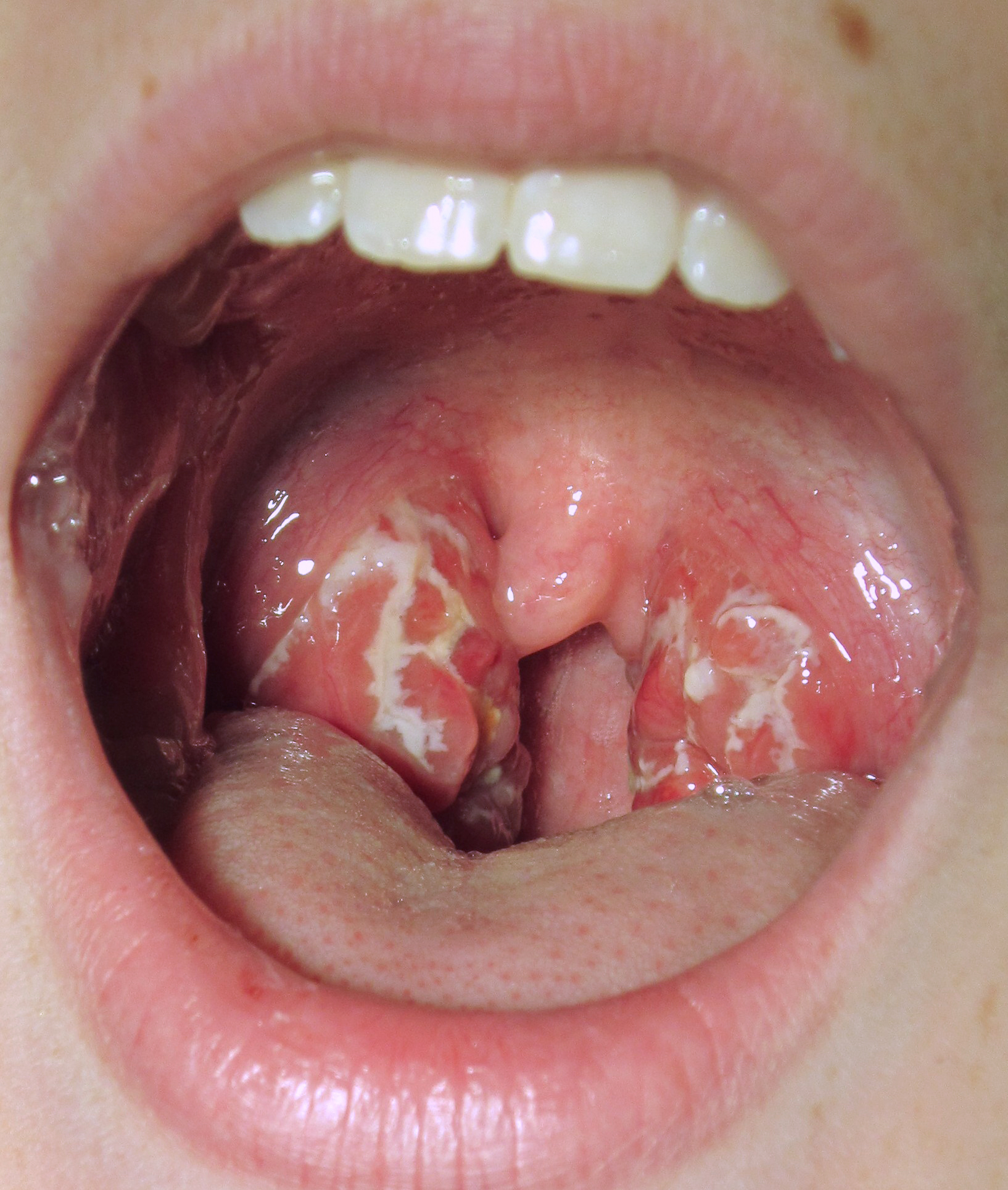What are the symptoms of strep throat?
Strep throat is a bacterial infection caused by Streptococcus pyogenes (group A streptococcus) that primarily affects the throat and tonsils. The symptoms can appear suddenly and may include:
- Sore Throat: A severe and sudden sore throat is the hallmark symptom. The pain is often more intense than that of a typical viral sore throat.
- Red and Swollen Tonsils: The tonsils may appear red, swollen, and sometimes have white patches or streaks of pus.
- Painful Swallowing: Difficulty swallowing or pain when swallowing is common.
- Fever: A high fever, often above 101°F (38.3°C), usually accompanies strep throat.
- Swollen Lymph Nodes: The lymph nodes in the neck may become swollen and tender to the touch.
- Tiny Red Spots on the Roof of the Mouth: These small red spots, known as petechiae, may appear on the soft or hard palate.
- Headache: A headache may occur along with other symptoms.
- Nausea or Vomiting: In children, strep throat can sometimes cause nausea, vomiting, or stomach pain.
- Rash: In some cases, strep throat can lead to a red rash known as scarlet fever.
- Fatigue: Feeling unusually tired or fatigued can accompany the infection.
Unlike viral throat infections, strep throat usually does not cause coughing, sneezing, or a runny nose. If you suspect strep throat, it’s important to see a healthcare provider for diagnosis and treatment, as untreated strep can lead to complications such as rheumatic fever.
What are the causes of strep throat?
Strep throat is caused by an infection with the bacterium Streptococcus pyogenes, also known as group A streptococcus. This bacterium is highly contagious and spreads easily from person to person. The main ways strep throat is transmitted include:
- Airborne Droplets: When an infected person coughs, sneezes, or talks, they release tiny respiratory droplets that contain the bacteria. Breathing in these droplets can lead to infection.
- Direct Contact: Strep throat can spread through direct contact with an infected person’s saliva or nasal secretions, such as by sharing utensils, drinks, or kissing.
- Touching Contaminated Surfaces: The bacteria can survive on surfaces like doorknobs, utensils, or toys. Touching these surfaces and then touching your mouth, nose, or eyes can transmit the bacteria.
- Crowded or Close Environments: Being in close quarters, such as in schools, daycare centers, or households, increases the likelihood of spreading strep throat.
Once infected, the bacteria multiply in the throat and tonsils, leading to the characteristic symptoms of strep throat. It’s important to seek medical treatment for strep throat, as antibiotics can help clear the infection, reduce the risk of complications, and decrease contagiousness.
What is the treatment for strep throat?
The treatment for strep throat primarily involves antibiotics to eliminate the bacterial infection, along with supportive care to manage symptoms. Here’s how strep throat is typically treated:
- Antibiotics: The first-line treatment for strep throat is a course of antibiotics, usually penicillin or amoxicillin. These medications are effective at killing the group A streptococcus bacteria, reducing the duration of symptoms, preventing the spread of the infection, and lowering the risk of complications like rheumatic fever. If someone is allergic to penicillin, alternatives like azithromycin or cephalosporins may be prescribed.
- Pain Relievers: Over-the-counter pain relievers such as acetaminophen (Tylenol) or ibuprofen (Advil, Motrin) can help reduce throat pain, fever, and discomfort.
- Hydration and Rest: Preventing dehydration and getting plenty of rest are important for recovery. Warm liquids like tea or soup, as well as cold treats like popsicles, can soothe the throat.
- Saltwater Gargle: Gargling with warm salt water can help relieve throat pain and reduce inflammation.
- Throat Lozenges and Sprays: Throat lozenges or sprays that contain anesthetics can provide temporary relief for sore throats.
- Avoiding Irritants: Avoid exposure to smoke, strong smells, or other irritants that can worsen throat discomfort.
- Contagion Prevention: It’s important to stay home until at least 24 hours after starting antibiotics to prevent spreading the infection. Avoid sharing utensils, drinks, or personal items during the contagious period.
With proper antibiotic treatment, symptoms usually improve within 1-2 days, but it’s essential to complete the entire prescribed course to fully eradicate the bacteria and prevent complications.

Leave a Reply
You must be logged in to post a comment.